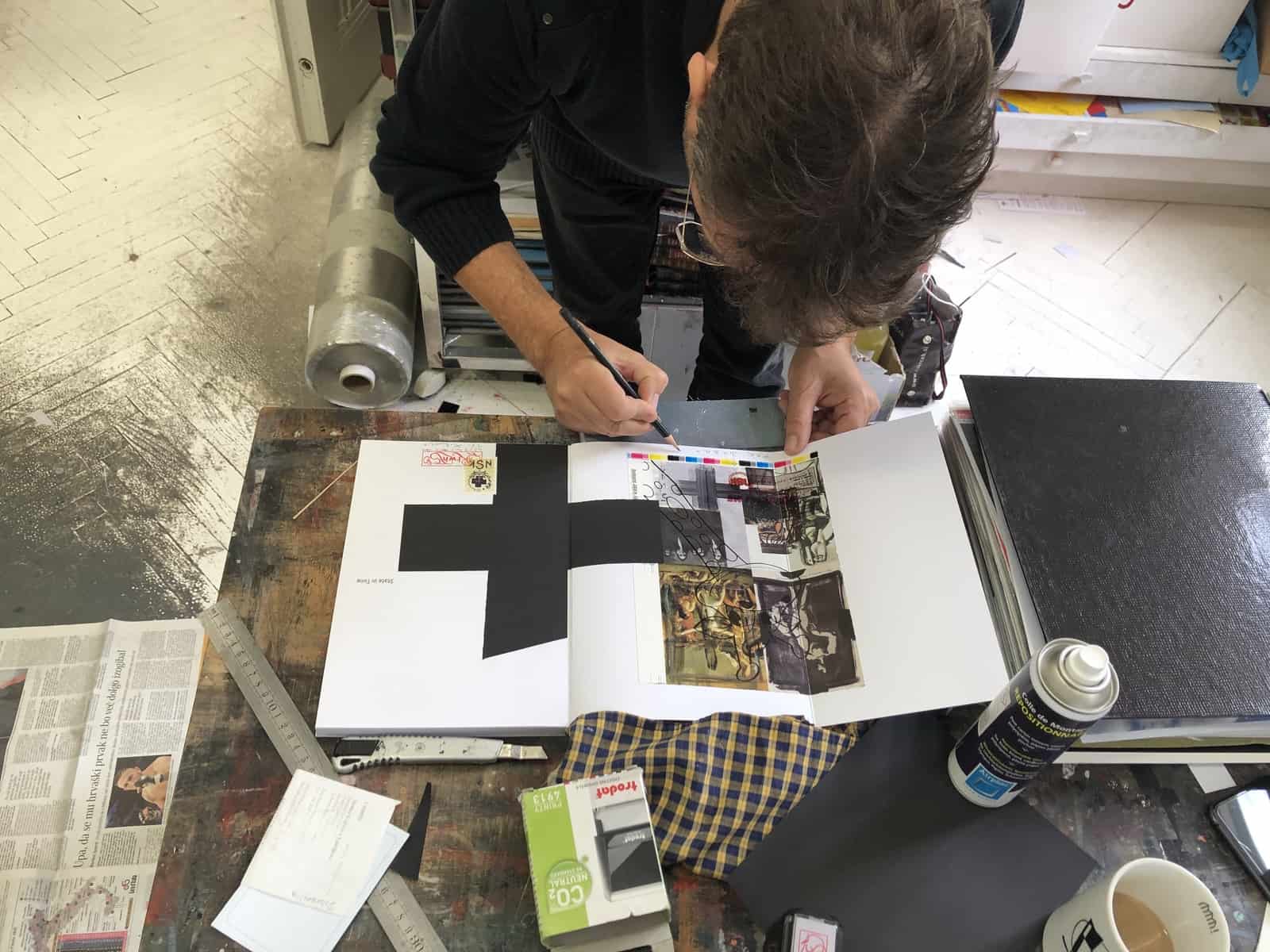Roman Uranjek’s studio
Last week, I had a pleasure to visit Roman Uranjek’s studio in Ljubljana. He was one of the founding members of the artist group IRWIN in Ljubljana in 1983. In his works, he tries to answer the question of what is the contribution of the so-called Eastern European art to Western art. How can it coexist and take part in the dialogue determined by the West. That is why he collects images, motifs, and iconic symbols from different periods of history and mixes them. He transforms them and gives them a new meaning. By borrowing the Western language of art from the East, he adds its voice, its point of view to a broader conversation. He constructs a narrative based on completely different aesthetics. In one hand, we have avant-garde aesthetics, the legacy of constructivism (sacrum), and on the other hand, we have paintings depicting deers (profane). As a result of these extreme juxtapositions and constant repetitions, a new value is creating.
Two years ago our contributor Maja Lorkowska had the pleasure of talking with the members of IRWIN, the visual art representatives of NSK: Miran Mohar, Andrej Savski, Roman Uranjek and Borut Vogelnik. IRWIN is one of the founding member groups of the larger NSK collective, established in 1984, a year after the IRWIN group had come into existence.
In 2017 ‘NSK State Pavilion’ was set up during the Venice Biennale, allowing audiences from all over the world to experience this alternative model of a nation first hand. They discussed the project’s beginnings, the nuances of national identity and the constant need for a fluid state. “It is pretty common, when contemporary art is in question, that artists are taking on the role of researcher, scientist, and biologist. By visiting an exhibition,, you are often confronted with the results of a scientific experiment. You know that you are visiting an art exhibition, but the field of art is being simultaneously extended over to other disciplines” – Roman Uranjek said.
‘State in Time’ was born out of a time of very specific political circumstances and a period of profound transformation. Change is constant, and of course, tangible on today’s global stage, but the context has changed. Maja asked them how do they see the NSK State fitting into today’s reality? Roman Uranjek said: “The fact that the number of the ‘NSK State in Time” citizens is continuously increasing is a confirmation of the relevance and significance of the project. An alternative to the existing state of things was always needed, in the past as well as now. We chose to express ourselves through the field of art, to which we apply ourselves according to our primary vocation. In Europe, we are confronted with a refugee crisis of large proportions; some refugees are familiar with the field of art, or are themselves artists. I would not be surprised if some of them tried crossing borders by using NSK passports. This used to happen during the war in former Yugoslavia. We had heard stories from Bosnian artists that left Sarajevo only with the help of NSK passports.”
Hungry for more?
























